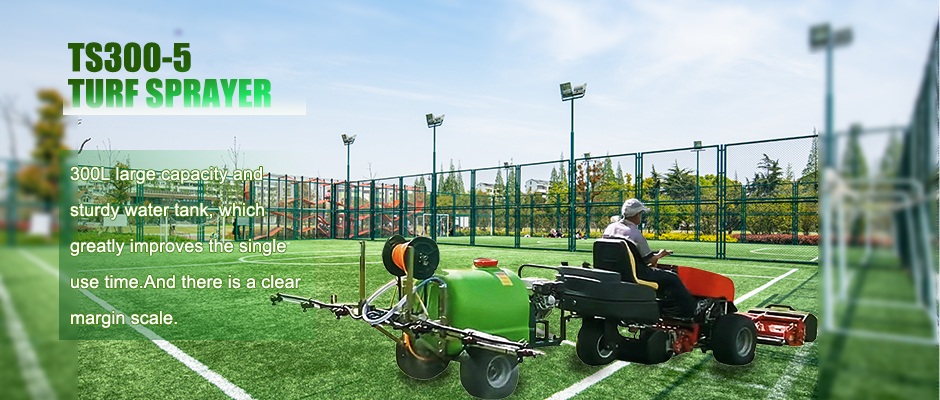Core tip: The tight water supply has gradually become a bottleneck restricting the development of urban lawns. The realization of water-saving lawn irrigation is an important issue faced by current lawn workers. The Grassland Research Institute of China Agricultural University conducted a comprehensive study on urban lawn water-saving technologies from aspects such as the selection of drought-resistant lawn varieties, determination of economic irrigation amounts for lawns, selection of lawn water-saving irrigation methods, and recycled water irrigation for lawns.
The tight water supply has gradually become a bottleneck restricting the development of urban lawns. The realization of water-saving lawn irrigation is an important issue faced by current lawn workers. The Grassland Research Institute conducted a comprehensive study on urban lawn water-saving technologies from aspects such as the selection of drought-resistant lawn varieties, determination of economic irrigation amounts for lawns, selection of lawn water-saving irrigation methods, and recycled water irrigation for lawns.
Research shows that modern turfgrass breeding technology, the application of scientific irrigation methods and the development of renewable water resources can greatly reduce the waste of water resources in lawns. Lawns are not as water-consuming as some people say.
Breeding drought-resistant varieties
Studies have shown that different types of turfgrass and different varieties of the same species have different water needs, so using water-saving turfgrass varieties is of great significance to saving water in lawns.
When breeding turfgrass drought-resistant varieties, in addition to using conventional breeding methods, biotechnology can also be used to introduce drought-resistant genes into turfgrass to obtain new drought-resistant varieties. It is estimated that genetically modified turfgrass with drought-resistant genes can save half of the water compared to ordinary turfgrass; if planted in a large area, it can save 20% to 30% of irrigation water.
Water-saving management and scientific irrigation
One of the keys to water-saving irrigation of lawns is to grasp the economic irrigation amount of lawns. The economic irrigation amount is the minimum irrigation amount to ensure the normal growth of turf grass. It is necessary to maintain the water balance of the lawn ecosystem and avoid water waste caused by excessive irrigation. Lawn irrigation should abandon the misconception that it is better to have more than lack, and realize scientific irrigation for different grass species.
The water requirement of a lawn is not only affected by the genetic characteristics of the lawn itself, but also by environmental factors, including maintenance and management level, soil moisture content, soil texture and soil fertility. Different seeding rates and stubble heights will cause significant differences in lawn water requirements.
Different proportions of nitrogen, phosphorus, and potassium fertilization methods result in different amounts of lawn mowing, and there is a significant positive correlation between the difference in lawn mowing amount and the water demand of the lawn. Lawns with quick-release fertilizers have much higher water requirements than lawns with slow-release fertilizers. From the perspective of water conservation, the proportion of quick-release fertilizers should be reduced in actual management.
Irrigation methods are very important for lawn water conservation. The traditional flood irrigation method results in uneven watering and serious waste. In recent years, due to the shortage of water resources, water-saving irrigation projects have developed rapidly. At present, the main water-saving irrigation methods include pipe irrigation, sprinkler irrigation, micro-irrigation and seepage irrigation.
Practice has proved that micro-irrigation and seepage irrigation are more suitable for farmland crops with branched rows and branches. For lawns with large areas, many plants, and even distribution, these two irrigation methods are not economical and effective. Therefore, water-saving irrigation of urban lawns mainly uses sprinkler irrigation.

An important part of the sprinkler irrigation system is the sprinkler head. Nozzles can be divided into low-pressure, medium-pressure and high-pressure nozzles according to their working pressure. Low-pressure sprinklers are generally selected for lawn irrigation. Small-area lawns or long strips of lawn can use short-range low-pressure small sprinklers; large-area lawns such as stadiums and golf course lawns can use medium-pressure sprinklers.
The distribution design of sprinkler heads should be reasonable so that the irrigation surface covered by the sprinklers is even. The sprinkler irrigation system also needs to select pressurization equipment with corresponding power according to the pressure condition of the water source, so that the sprinkler irrigation can achieve the ideal effect.
Irrigating your lawn with recycled water
The sewage that has been recycled and utilized is called reclaimed water, which is divided into primary treated water, secondary treated water and tertiary treated water according to the process. At present, most lawn irrigation uses tap water or groundwater directly.
On the one hand, lawn irrigation is increasingly increasing the burden on urban water supply, and on the other hand, urban domestic sewage has not been rationally utilized. The China Environmental Status Bulletin published by the State Environmental Protection Administration shows that the total wastewater discharge nationwide in 2003 was 46 billion tons, indicating huge development potential.
Studies have shown that it is basically feasible to irrigate lawns with secondary treated water, but it was found that the roots of turfgrass showed varying degrees of browning symptoms. This may be because there are too many suspended solids in the secondary treated water and the accumulation of salts in the soil blocks the soil pores, affecting the Soil permeability causes physiological stress to turfgrass.
Compared with secondary treated water, the application of tertiary treated water is much safer. It is generally believed that tertiary treated water can be used in any place except for drinking, including fish farming, washing, swimming pools, irrigation, etc. Although the cost of using tertiary treated water for irrigation is relatively high, there is a trend of gradually replacing secondary treated water.
Post time: Oct-12-2024
